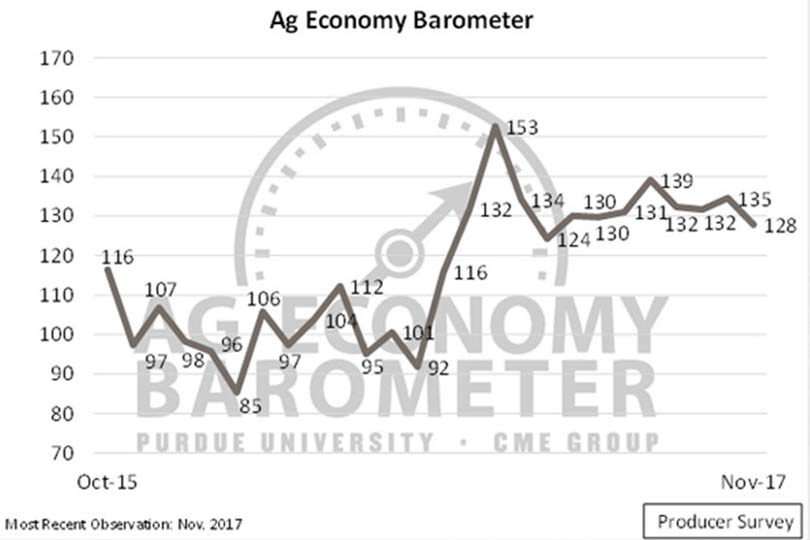The Purdue/CME Group Ag Economy Barometer dropped seven points in November, signaling a slump in U.S. farmers’ confidence compared to a month earlier. At a reading of 128, the measure of farmer optimism in November was the second weakest observed during 2017 and stood just four points above the 2017 low of 124, set in March.
Based on a monthly phone survey of 400 farmers and ranchers from across the U.S., the latest results, although indicating less confidence about the agricultural economy than in October, still suggest farmers and ranchers remain more optimistic than they were prior to the fall 2016 election.
The November slide was driven by farmers taking a less optimistic view of the future. The Index of Future Expectations declined 10 points compared to October as the index fell to 127. The decline in optimism about future economic conditions stands in contrast to farmers’ assessment of current economic conditions, however, as the Index of Current Conditions reading of 129 in November was unchanged from October.
The percentage of farmers expecting “bad times” for the agricultural economy in the year ahead climbed to 62 percent on the November survey. The percentage of farmers expecting bad times for the agricultural economy has been increasing since July, when it hit a summertime low of 50 percent. At the same time, the percentage of farmers expecting good times for the agricultural economy in the upcoming year dipped to 28 percent in November, down from 35 percent in October.
Farmer expectations regarding farmland values appear to have strengthened somewhat as more farmers and ranchers expect farmland values to increase than decline in the next 12 months, the first time this has happened since data collection began in October 2015. More broadly, however, the biggest shift in farmer expectations regarding farmland values seems to be a movement away from an expectation of weaker values to an expectation that values are likely to remain unchanged over the next year.

